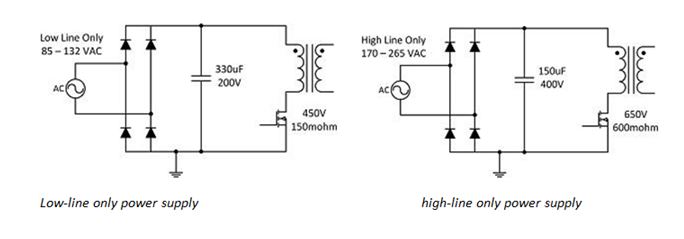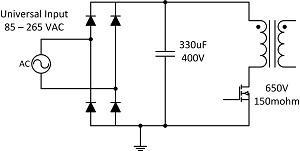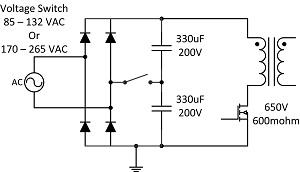Around the world, over 200 countries use Alternating current (AC) power as a convenient power source for many electronics. However, the power around the world is not the same in each location, accommodating different voltage levels and frequencies. Europe and most other countries in the world use a voltage which is twice that if the US, between 220-240 volts compared to 100-127 volts in the Americas and Japan. While the US uses both AC and direct current (DC) systems , AC became the dominant form of transmission power in Europe and the US. Furthermore, the development of engineered universal systems allowed a large number of legacy systems to be connected to large AC grids. With much of the world using AC, why do we not have universal high-power AC inputs?
The movement of electrons through a conductor (electricity) flows in two ways: either in a direct current (DC) where the electrons flow steadily in a single direction or “forward,” or an alternating current (AC) where the electrons keep switching directions in a sinusoidal wave forwards and backwards. The difference between currents requires a power supply to make the energy usable. Most of the reliable power sources can be broken down into two voltage categories: low line or high line. At the lowest acceptable AC input, or low line, efficiency is likely to be appreciably lower than when the power supply is operating at its maximum rated input, or high line. Power supplies that operate at low line need to carry more current than those that are high line only. The supplies designed for high-line needs to have high voltage components. Designing a power supply that works over the “universal input range” (85-265 VAC) would reduce the number of product skews and components for procurement purposes of manufacturers, and would be useful for applications that are taken to different regions such as cellphone and laptop chargers.
Designing a power supply that works over the “universal input range” (85-265 VAC) would reduce the number of product skews and components for procurement purposes of manufacturers, and would be useful for applications that are taken to different regions such as cellphone and laptop chargers.
 Universal input power supply
Universal input power supply
So why don’t we already have universal high-power AC inputs? One argument cites power sources as the primary reason. The universal input design has to accommodate the worst of both low- and high-line power supplies; it needs to be able to handle the higher current of low-line operation and support the high-voltage requirements of high-line operation. A voltage selection switch may accommodate the variation but comes with the risk that the user will not put the switch in the right state
 Power supply with voltage range switch
Power supply with voltage range switch
Another argument for having separate products involves regulation in each region. Much like differing voltage levels, each region has its own set of regulatory specifications that have to be tested and certified. With that said, having a hair dryer that will only be used in the United States certified for use in Europe does not make much sense. Additionally, some regions such as Europe require power factor correction (PFC), which is not required in other regions. The power factor of an AC electrical power system measures the ratio of real power flowing to the load to the apparent power in the circuit. PFC may be applied to a transmission network to correct for poor power factor in the AC power system, improving stability and efficiency. Incorporating PFC, however, increases the cost of the universal input design, especially as the design of the input capacitors and main power switches changes based on the input range, driving a cost difference. The design’s power level also has a major effect on the cost difference. For a 5-10 W adapter that charges a cell phone, there is not going to be a noticeable difference. However, for a 250 W audio amplifier, the cost difference can be significant.
 Tradeoffs between the four supplies
Tradeoffs between the four supplies
Considering that product spec requirements vary by region, it doesn’t make sense to design a single template; instead, a lower, but diverse production run is a better solution. Nonetheless, the need for universal input power supplies remains, requiring the designer to make a decision based on the power level and portability, and take into consideration the requirements and certifications in different regions to determine if it makes sense.
Advertisement
Learn more about Electronic Products Digital





